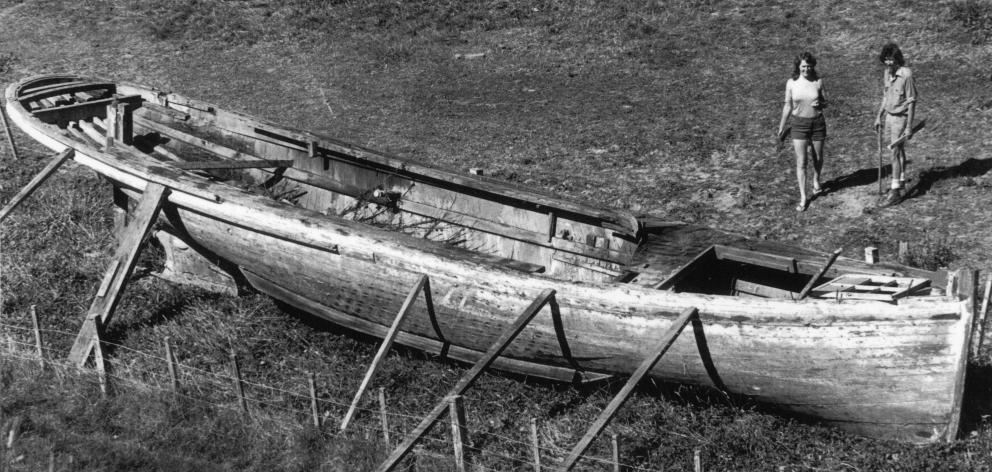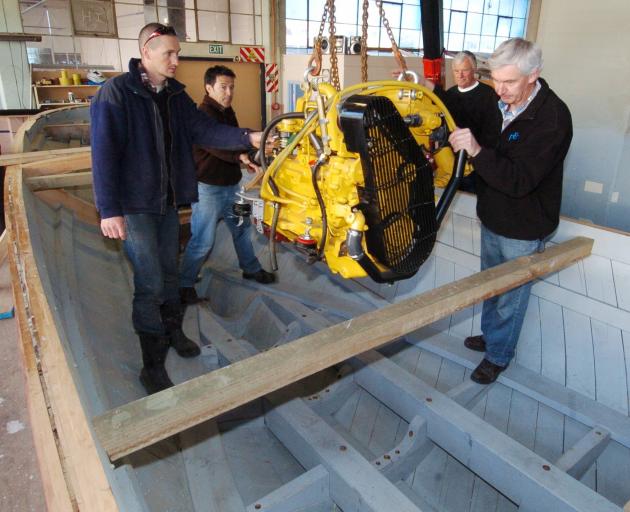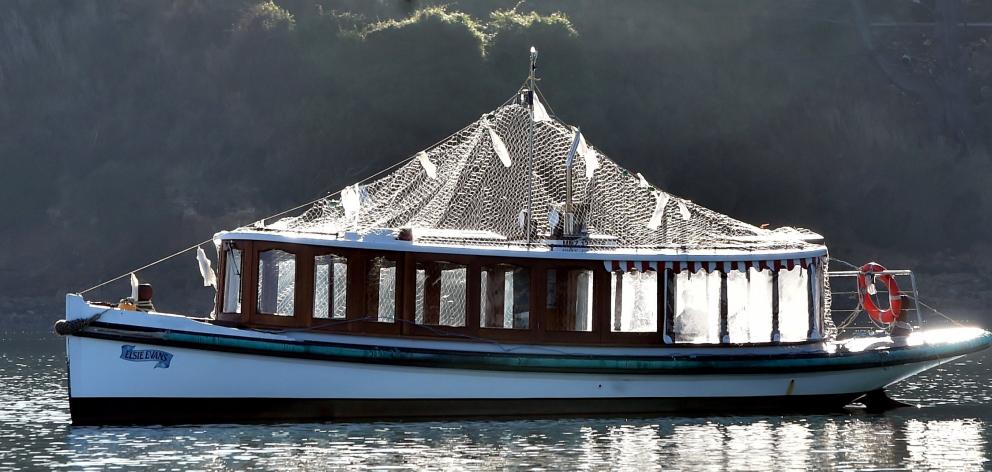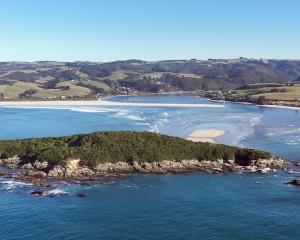
A "floating heritage asset" is how Shem Sutherland describes Elsie Evans.
"It’s fitted out better than it has been in its history."
The Elsie Evans Harbour Ferry Facebook page shows a series of videos of the vessel cruising effortlessly across the Otago Harbour or sitting calmly in the harbour basin.
Its hull was repainted this year, providing what appear to be the finishing touches of an extensive renovation project worth about $500,000 and which received $65,250 of funding from the Dunedin City Council.
What the ferry moored in the harbour is not doing is operating as a service for paying passengers.
For that, it needs to be confirmed as seaworthy, guided by a skipper certified to take passengers and run by an operator willing to take on a lease or be part of a partnership.

He likens the process, which has included hundreds of hours of volunteer labour, to climbing a mountain.
"The top of the mountain is the hard part."
He continues to call for an operator and the society made the same pitch on its Facebook page in March.
"This vintage launch is up for lease, so contact us and have a chat ... No time like the present to be part of the local tourist scene."
In these coronavirus-disrupted times, an operator would be brave to rely on international visitors. It is hoped a cycleway from Port Chalmers to Portobello could boost ferry traffic. The shared path for walking and cycling is expected to be completed next year and Mr Sutherland says people could bike the length of it and take the ferry to where they started.
He is, of course, well aware much doubt swirls around realisation of the society’s vision.

"Dunedin needs a heritage boat," Mr Sutherland insists.
"That’s our heritage boat.
"They said it was never going to get restored — and it’s been restored."
The Elsie Evans was built by Auckland firm Charles Bailey Jun.
It was launched in 1901 and named after the wife of William Evans, the Timaru Harbour Board chairman at the time.
Portobello Railway and Ferry Company director Captain Percy Moss bought it in 1927 and the boat was used as a launch to tow barges or carry freight and sometimes take passengers.
It provided a regular passenger service from 1944 to 1954, ferrying up to 37 passengers between Portobello and Port Chalmers.

The South Canterbury Historical Society bought it in 1997, but the Elsie Evans returned from Timaru to Dunedin in 2003, where the vision was to get it back on the water, rather than preserve it for static display.
Repairing the hull was the first stage of the project.
The cabin area does not reflect how the vessel appeared in earlier times, but was instead modelled on a Protex built in 1907.
Otago Harbour Ferry Inc was clear about its aims when it formed in 2004.
They included restoring a harbour ferry to operating condition, promoting an appreciation of maritime heritage, raising funds and "to maintain and operate the said vessel for passenger use", for the recreation of members of the society and the public.

However, since the vessel returned to the water in August 2013, members of the public may wonder about how well they have benefited from public investment.
The city council approved a $20,000 suspensory loan to the society in 2009.
No interest was charged and the loan did not have to be repaid, unless the ferry was sold or it spent more than a year outside the harbour.
IN 2012, another suspensory loan from the city council began, for $10,000 this time.
Cr Lee Vandervis has historically expressed some support for the venture, but says there ought to be public benefit from the money put in.
"There has been significant public investment in it," he says.
"It should at least be on public display, until there are enough tourists to make it a viable proposition.

"We’ve got the harbour. We’ve got the boat. It would be lovely to see it used."
One man who has been happy to volunteer time is Stuart Reid.
His contribution has ranged from helping to wash down the inside of the vessel to installing windscreen wiper units.
He would hate to see the boat as a museum piece.
"It’s great to see a boat of that calibre on the harbour."
Some society members were interested principally in getting the vessel ready for launch and their interest subsequently waned, and some influential members have died. Differences of opinion also surfaced and Mr Sutherland came in for criticism.
However, society treasurer Darryl Young joined the committee in 2017.
He says Mr Sutherland has put in a phenomenal amount of work and volunteers remain committed.
A viable commercial operation looks difficult, Mr Young concedes.

Funders have included the Sargood Bequest, the Southern Trust, Otago Community Trust, Lion Foundation, Rotary of South Dunedin and Pub Charity.
Otago Peninsula Community Board member Lox Kellas recalls a gathering assembling for stability testing a few years ago.
However, neither income nor expenditure has been above $10,000 since 2017 and, in the year to March 2021, income was $401 and expenditure $431.
In 2019, Mr Sutherland characterised the final hurdles as a chicken-and-egg situation.
Funders would not commit their money to a seaworthiness survey until a lessee was found, and any potential lessees would not lease Elsie Evans until the survey was completed.
He and other volunteers offer much the same refrain now.
However, Mr Sutherland says the vessel’s potential and operating limits are now well understood and a business opportunity remains.
The Elsie Evans can now carry about 17 people, is relatively cheap to operate and looks elegant.
"People just love seeing it on the harbour."
Timeline
1901: Elsie Evans built, first pilot boat owned by the Timaru Harbour Board, later plied Otago Harbour in various roles, including as a ferry, from 1928. Ended its days as a ferry in 1954, spent 17 years lying by a macrocarpa hedge at Waihola. Was stored in Timaru, and returned to Dunedin in late 2003.
2005: Portobello’s Shem Sutherland announces plan to restore vessel as a working launch carrying sightseers around the harbour.
February 2006: Expected cost of project reported in Otago Daily Times as $120,000.
December 2006: Mr Sutherland reports $73,000 raised for stage 1 of restoration, another $60,000 needed for stage 2. Hoped sea trials would begin by end of 2007.
May 2007: Mr Sutherland asks Dunedin City Council for $25,000 for final stage of the restoration. Project estimated at $160,000. Council agrees to $20,000.
November 2008: Work completed on vessel’ s hull, Otago Harbour Ferry Inc fundraising to complete the boat’s superstructure. Society reported to need $81,000 to complete what is now $200,000-plus restoration.
October 2010: Mr Sutherland tells ODT the society has raised more than $350,000, and was seeking a further $65,000 to relaunch the ferry.
August 2013: Vessel back in harbour.
June 2016: Mr Sutherland puts the cost of the restoration at about $480,000.
January 2019: Mr Sutherland says restoration almost complete, but vessel still needs to be surveyed and certified, which could cost $15,000.












